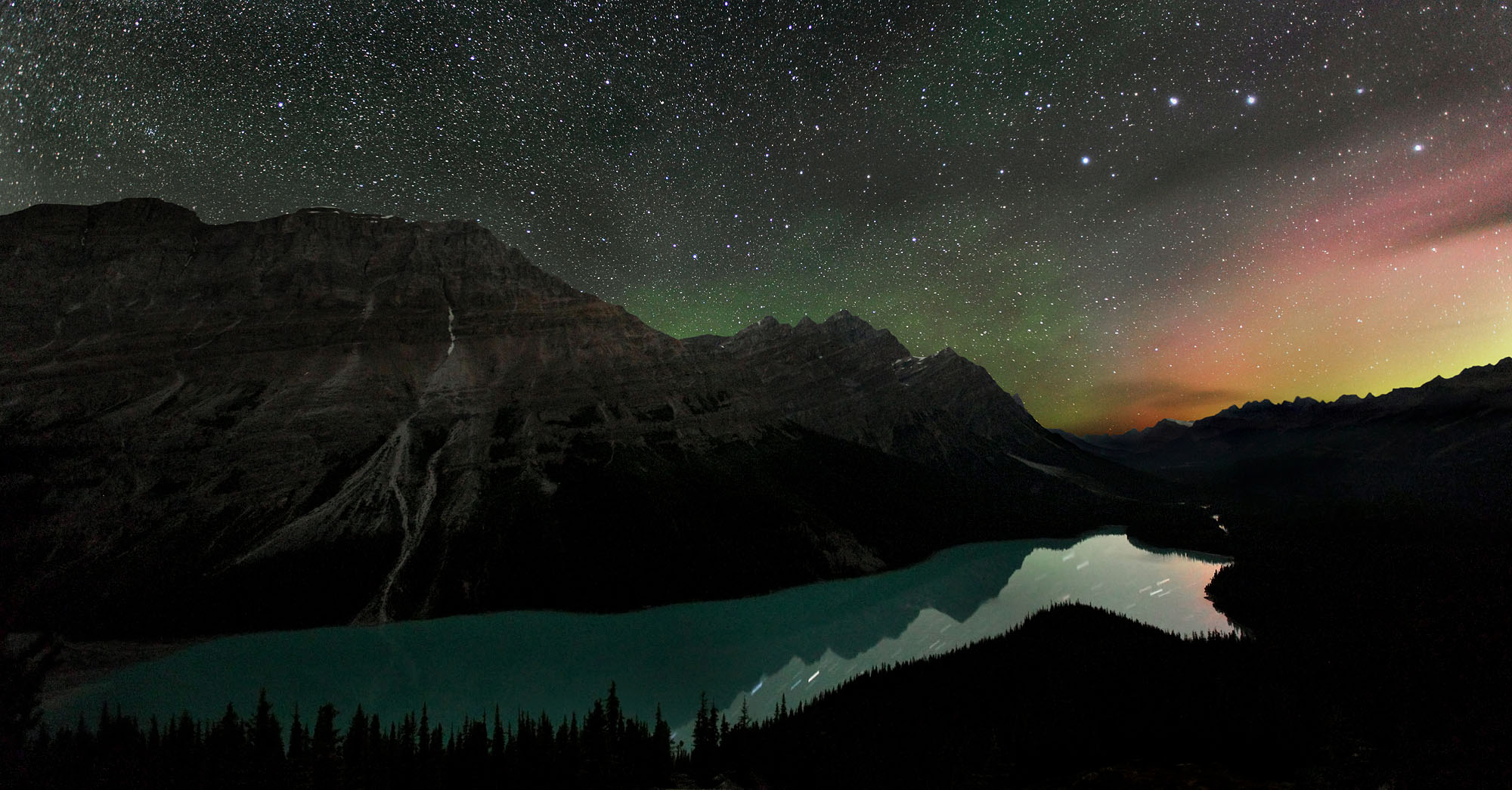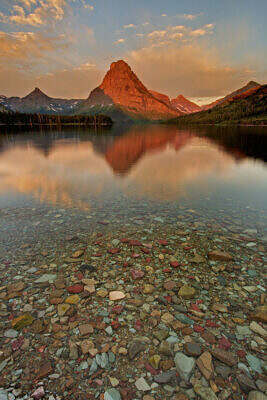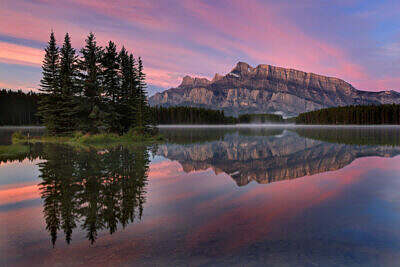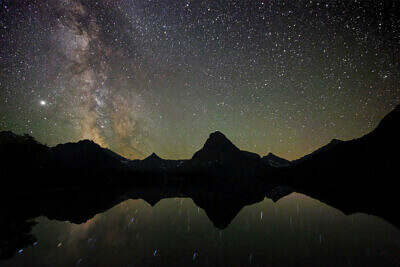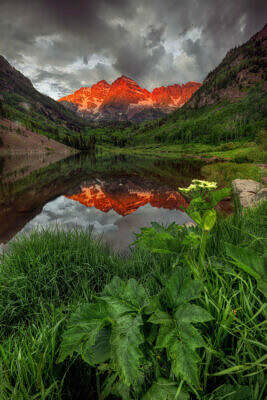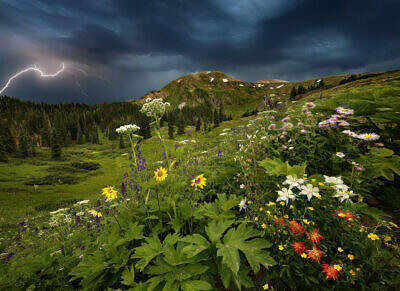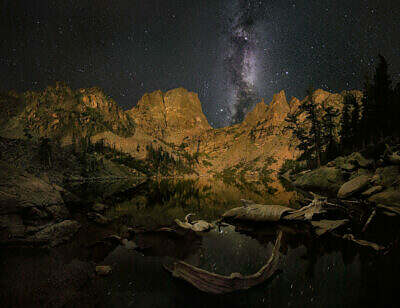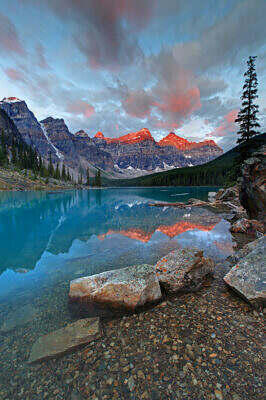Red and green northern lights flicker silently across the starry night sky over Peyto Lake in the Canadian Rocky Mountains near Banff. Shortly before moonrise the moon is painting the northern horizon in yellow.
The stream carries vast amounts of sediments and rock flour into the lake. The latter causes the lakes beautiful and famous blue-green waters, even visible at night.
-
Northern Lights over Peyto Lake in the Canadian Rockies
Above and Beyond
- Ancient Shorelines
- Moments to Remember
- Grand Teton Skyline
- Patterns in the Void
- Only a Memory Remains
- Oh Be Joyful
- The Wild Embracing Silence
- Valley of the Ten Peaks

